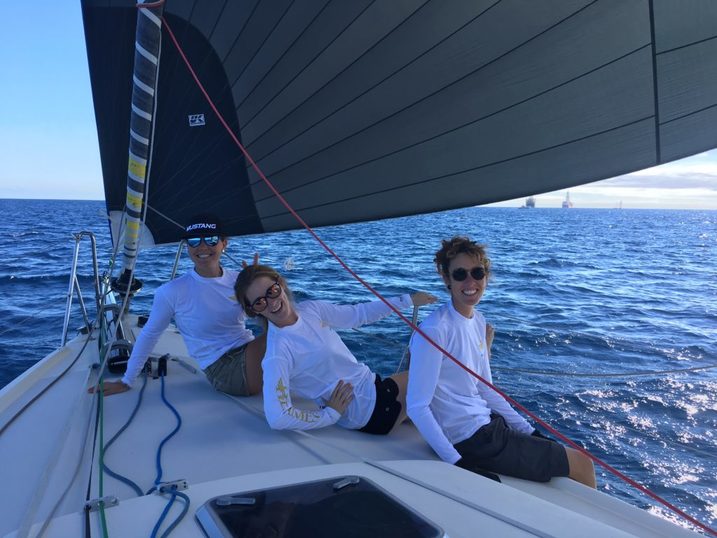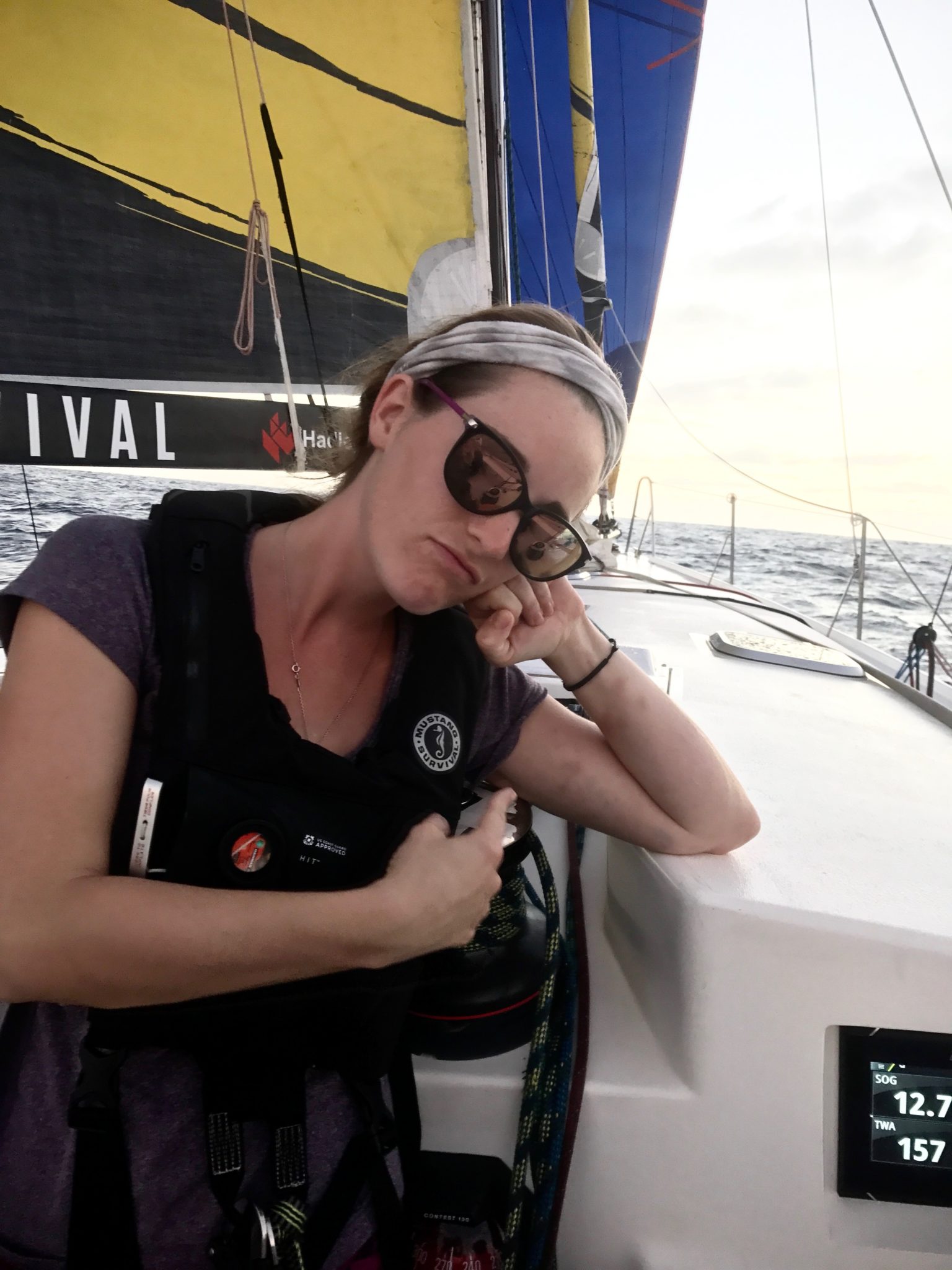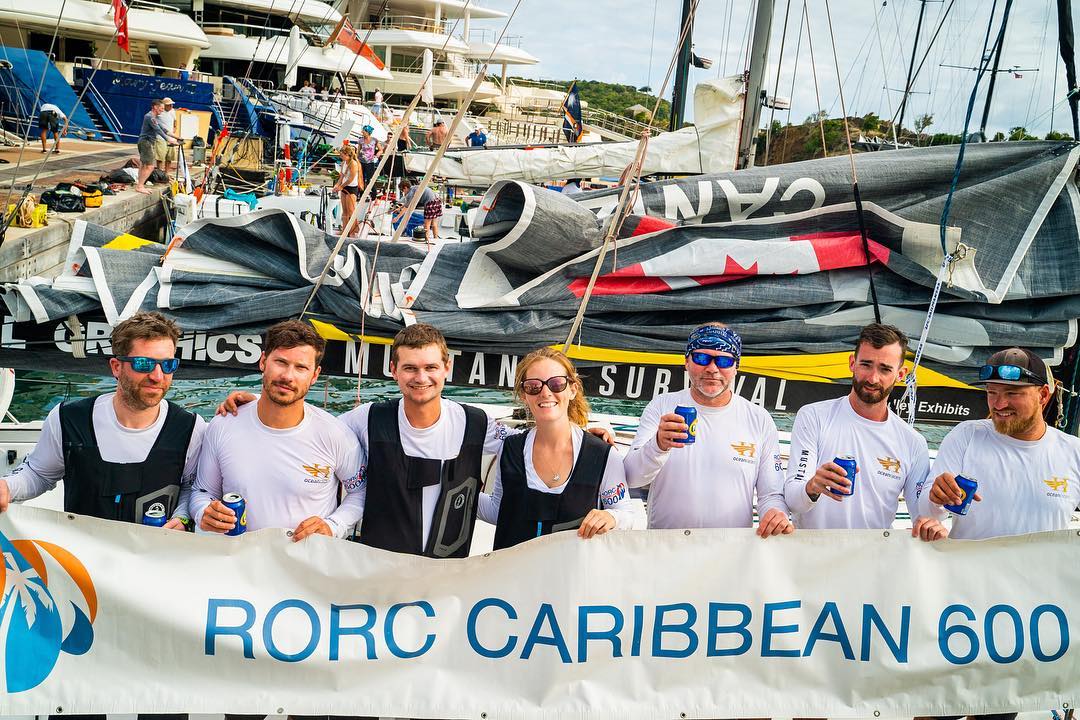Even the world’s solo sailors have teams behind them. Building an effective team can take years, something that professional teams spend millions of dollars in campaigns in attempt to create.
But what happens when you have just a few short days to build a team; is it possible? Can a freshly formed team of strangers actually be effective?
We’ve performed this human experiment nearly every offshore race event on our Pogo 12.50, Hermes. Crew from around the world leave their local waters, pack their bags, and join us as independents for races they’ve likely never done, on a boat they may have never sailed before. Despite only really knowing the social media version of Meg & Morgen, these strangers come together with at least one thing in common — a passion for offshore racing — and the rest of the team building is up to us.
So how do you form a solid team?
Establish a Culture
The Ocean Racers team is established before the crew even arrives. Our team culture is evident through our social media, as well as the crew agreement we have all teammates sign before joining us. We do not sugar coat, put on face, or do anything to misrepresent Ocean Racers, our mission and goals to the public, as this is what drives people to our team.
We never have to worry about an old salty dog whose ego prevents him from being a good team member. As young skippers, who humbly acknowledge our breadth of experience, we only attract future crew members who respect and appreciate that experience we have to offer. By being clear and confident about who we are and our team’s missions, we set the tone and manage expectations before an applicant is even accepted.
In establishing a solid team culture, new team members are onboard with the cause before they actually step onboard. We don’t promise anyone that we will win, but we do promise that we will safely deliver on the offshore adventure they signed up for… so expectations are realistically managed, everyone then leaves happy and most want to come back again.
Put ‘Em with their People
One of the critical challenges of forming an offshore team is determining what the watches will be. Naturally, the boat must be split into two teams, and every 3-4 hours these two squads will rotate on and off duty on a watch system. So not only must you create a cohesive team, but also two teams within the team that don’t negatively affect the overall team… still following?
You certainly must strike a balance of talent and strength per watch, but personality also plays a major role. On offshore races like a Transatlantic, your watch is comprised the few people that you will spend literally every waking moment with for weeks. So it is important to establish the right sub-teams (watches) to avoid any imbalances or potential conflicts in the future.
What we always try to do is carefully observe the crew during our training and orientation days to see if any subgroups naturally form. This looks different every time and there isn’t necessarily a formula. In the past, we’ve divided groups by age, profession, hobbies, nationality, and sex — for last year’s ARC Transatlantic we had a very successful Girls vs. Guys watch. But while both watches usually have fun with their “people,” sometimes it is important to mix things up and strike a balance to avoid the potential imbalances that can occur when you separate and put like-minded groups together.

Strike a Balance
On our ARC Transatlantic, our Guys vs. Girls watch was not a mismatch of strength, as we had one girl who could easily out-lift most of the guys. It was not a mismatch of emotional energy, as the ladies and gents both got along well with each other and the other watch. What could have been an issue from the separation of the sexes was an imbalance of prudence.
We had 4 out of 4 kites fail on the Transatlantic, all for a variety of reasons. However all 4 kites were lost on the Guys’ watch. Coincidence? Maybe, maybe not. But it could also be argued that the guys were a lot less prudent than the girls. Our Girl’s watch was always putting reefs in early, as well as taking down kites in advance. The guys would sail hot angles and chase speeds, while the girls were more consistent and on course.
Might we have had better averages overall and less kite damage if the female prudence was paired with the male zealousness? Potentially; and these inherent differences between men and women are another factor to be considered when forming team(s). Men and women racing together is actually a good thing, not just a “social experiment”!
Take it from the Top
It’s not often that you have a team with two skippers, but co-skippering a crewed boat is actually possible if you do it right. Ultimately, there always has to be the 1 at the top, that’s Morgen, but I fulfill equal skipper duties and take financial responsibility as well, so it certainly feels like equally shared responsibility.
Team culture and building a team absolutely has to come from the top. Everyone has different leadership styles, Morgen and I certainly do, but what we do not falter on are our core commitments to each other and the team. This is important in day-to-day happenings onboard, but is most critical when something goes wrong and effective leadership is what will make or break the team.
One of our first nights on the ARC Transatlantic, I wrapped our brand new kite around the jib stay. I could tell you reasons why it happened, it definitely was an accident; but the most important part of this situation wasn’t the problem — and certainly wasn’t any excuses — it was the solution. As a distraught team brainstormed how we could get it down, I knew the only way was to send someone up the mast, and that someone had to be me.

It was my fault, and even if it wasn’t, as the co-skipper and owner, it was my responsibility. The deflated and frankly bewildered crew soon became inspired and rallied around their leader. I accepted the problem with such great confidence and resolution (despite being scared shitless) that the crew couldn’t help but imagine a positive outcome. And a positive outcome is what we got.
All About Attitude
Attitude, at the end of the day, is what makes or breaks a team. A bad attitude has a strong affect, as does a good one. I’ve seen teams deteriorate rapidly from a bad attitude, and I’ve seen teams achieve extraordinary things from a strong positive attitude. Negativity spreads like a virus, but so can positivity. Attitude is one of the few things we have control over at sea, so be mindful and use it to your advantage. The phrase “we’re all in the same boat” should drive how the team acts and reacts to things.
Team Building & Leadership — not just for sail boats
While we are only speaking about a team of 6-8 people, these team building strategies can be applied to much larger teams and on land! We must work in a variety of teams in our lives, from our offices, to communities, even family and friends. There is no secret formula to building effective teams, but efficient teams don’t build themselves.
A team culture with respected leadership must be established. There must be a vision and mission for the team to rally behind and follow — and a written guide certainly helps! As a leader, you must find and highlight the things that unite the group, while also respecting and utilizing the differences and diversity that help propel a team above average.
This is certainly not an easy task, and after 4 years of doing this, we’ve adjusted our own expectations and protocol to make our race teams work. While offshore races provide enough time to form a team of strangers, there really isn’t enough time to create an effective race team for some inshore regattas after just a couple of days training. Thus, in 2019, we started only offering our regattas for full team charters so we can focus more on performance rather than team building for inshore races.
If you’re interested in bringing your team down to test your race skills on our Pogo 12.50, Hermes, join us for a Caribbean Regatta in 2020! Each regatta is unique, so contact us to discuss which one is right for you and your team. We provide training, coaching and a turn-key regatta experience so teams can excel and compete at a higher level. Any individual interested in joining the Ocean Racers team can do so by applying to join our crew for offshore races like the Caribbean 600 and Antigua Bermuda Race. We welcome all like-minded sailors to apply!

